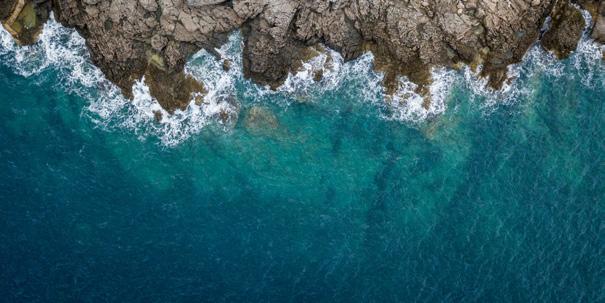
2 minute read
WHERE DOES THE EARTH’S WATER COME FROM?
• BY ANDRÉ GRANDCHAMPS
There is no denying that the presence of water on the Earth was a determining factor in the appearance of life. But how did the water get there? There are two theories about this crucial stage that occurred some 150 million years after the beginning of the formation of our planet.
FROM THE BOWELS OF THE EARTH
In the first of the two theories, geologists and astronomers put forward the hypothesis that the water came from the Earth itself.
The solar system came into existence some 4.56 billion years ago, when a cloud of gas and dust collapsed in on itself. The vast majority of the matter became concentrated at the centre of the cloud to form the Sun. The residual matter began orbiting around the sun in the form of a disk inside which there were microscopic ice-covered particles of dust.
As a result of collisions, the dust particles fused together into larger particles and eventually formed embryos of planets. The Earth, like all the planets in our solar system, came into being as one of these embryos.
The water covering these dust particles thus found itself trapped in the rocks that originally formed the young planet Earth. When magma started being forced up from the depths by volcanic activity, the water was pushed up to the surface along with it.
As the Earth’s temperature was high in those early years, the water quickly evaporated to form an atmosphere. It wasn’t until the temperature had fallen sufficiently and the magma had created a solid crust at the Earth’s surface that the water vapour in the atmosphere finally fell to the ground in the form of liquid water.
ICE FROM COMETS
There is also a second theory about the appearance of life-giving water on our planet. Some astronomers hypothesize that our water comes from comets, the agglomerations of rock coated in a thick layer of ice that have crashed into the Earth’s surface.
However, doubt has been cast on this theory by space exploration, which has shown that the molecular signature of the water in comets is different from that of the water on Earth.
The study of the water contained in primitive meteorites, which formed at the same time as the embryonic planets, shows that it is similar to the water in the Earth’s oceans. It is therefore more likely that the water on Earth comes from this type of rock, which supports the first theory.

The appearance of water on the Earth is just one of the many fascinating stages in the formation of our blue planet. Starting April 28, the Planétarium Rio Tinto Alcan will be showing “Birth of Planet Earth,” a film that tells this captivating story!
PHOTO Shutterstock/Boiarkina Marina










